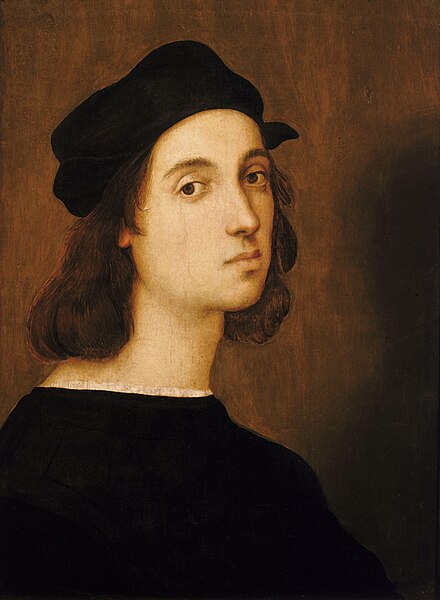Polidoro Caldara, usually known as Polidoro da Caravaggio was an Italian painter of the Mannerist period, "arguably the most gifted and certainly the least conventional of Raphael's pupils", who was best known for his now-vanished paintings on the facades of Roman houses. He was unrelated to the later painter Michelangelo Merisi da Caravaggio, usually known just as Caravaggio, but both came from the town of Caravaggio.
Polidoro Caldara
Palazzo Massimo Istoriato; a fading palace facade in Rome by Polidoro and Maturino, 1523.
Christ Carrying the Cross (1530–34), Naples
Mary Magdalene by Polidoro da Caravaggio and Maturino da Firenze, in S. Silvestro al Quirinale, Rome (c. 1525)
Raffaello Sanzio da Urbino, now generally known in English as Raphael, was an Italian painter and architect of the High Renaissance. His work is admired for its clarity of form, ease of composition, and visual achievement of the Neoplatonic ideal of human grandeur. Together with Leonardo da Vinci and Michelangelo, he forms the traditional trinity of great masters of that period.
Presumed portrait of Raphael
Raphael, The School of Athens
Raphael, Cardinal and Theological Virtues, 1511
Giovanni Santi, Raphael's father; Christ supported by two angels, c. 1490








